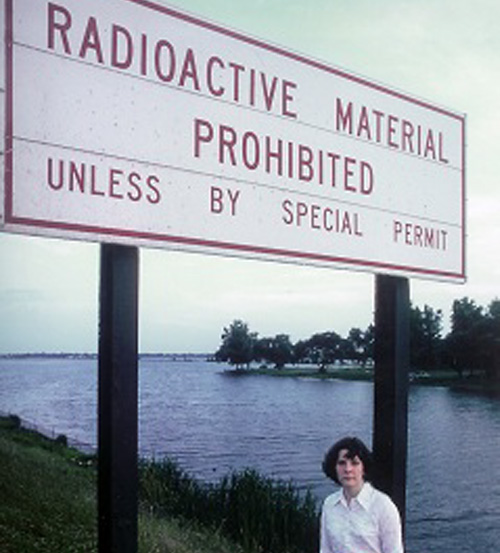The 14th annual Greening of the Arts Reception, Show & Concerts opens at 5:30 p.m. Friday, October 18 at the Bernard Gallery, Calumet College of St. Joseph (CCSJ), 2400 New York Ave., Whiting.
Sponsored by the Association for the Wolf Lake Initiative (AWLI) and CCSJ, the show features local artists through November 22. As in the past, the Greening of the Arts show features artists who use recycled products or who focus on nature and the environment.
Works include paintings, prints, sculptures and photographs.
This year's artists include Claudia Charo of Hammond, painting; Pat Hansen of South Holland, painting; Rebecca Moss of Oak Lawn, photography; Tom Mullins of Whiting, photography; Robert “Piro” Ramirez of Chicago, abstract paintings in acrylic; Roman Villarreal of Chicago, painting; and Jennifer Young of Whiting, digital photography.
Participating in the student competition are entries from CCSJ.
The art show opens at 5:30 p.m. with a wine and cheese reception and live music by Abigail Pennanen of Hammond. There will be a book signing session with author Michael Boos. Over the Line is his newly published 20-year history of AWLI as an organization.
Scheduled at 6 p.m. is an artists’ forum with opening remarks by Professor Walter Skiba, associate professor of arts and humanities at CCSJ.
The program begins at 6:30 p.m. with acknowledgment of volunteers, funders and donors to AWLI in 2019. Funders include Elizabeth Morse Genius Charitable Trust, Ford Motor Company Fund, Indiana Humanities, and the Legacy Foundation of Indiana.
At 7 p.m. there will be a concert by the alternative rock band, The Brave Day. It features Bryan Pirosko, Roye Robley, and Kevin Mackowicz. The group has played together since 2002.
Formed in Hammond, The Brave Day has played throughout Indiana and Illinois. The band has released a handful of EPs, including one in 2012, titled Fast, and one in 2014, titled Act II: The Crossing.
Winners of the student competition will be announced at 8 p.m. at the end of opening day.
The concert series on the Nexus of Art and Nature will enter its second season as a benefit for the art program at CCSJ and AWLI. Subsequent performances will be held at the same time on Fridays through the run of the show. All but the second concert will be held in the Barbara Goodman Black Box Theater, adjacent to the art gallery.
On Oct. 25, organist Br. Benjamin Basile, C.PP.S. and oboist Kathryn Brtko will give a recital featuring the recently restored 19th century Kimball pipe organ in the Bernard Gallery at CCSJ.
Brother Ben is associate professor of mathematics at CCSJ. Kathryn is principal oboe with the LaPorte County Symphony Orchestra and participates in music ministry with a number of churches in the NW Indiana/ Chicago area.
Guitarist Ron Skertich of Hammond will perform on Nov. 1. He plans to do a variety of acoustic tunes with country/bluegrass flavor, some folk, and perhaps a Beatles tune.
In the past, Skertich has played with a bluegrass group and a rockabilly band.
David Dolak of Hammond will perform on Nov. 8, playing a mix of classical, classic jazz and pop music. He will add some folk songs of the region.
Dolak is a professor of instruction at Columbia College, Chicago, and teaches a course in instrument making.
The Brilliant Etesian Ensemble will perform on November 15. The woodwind group includes Lupe Esquivel, bassoon, Park Forest, IL; Ken Carlborg, clarinet, Chicago Heights, IL; Niki Juarez-Cummings, flute, Steger, IL; Larry Meschi, soprano saxophone, clarinet, and bass clarinet, Highland, IN.
The Ensemble is composed of musical friends who met through the music program at Prairie State College. Its repertoire is an eclectic mix of original compositions and dedicated arrangements, which runs the gamut from classical to jazz, pop to rock.
Tyler Bush is curator of the Bernard Gallery and serves as the director of Digital and Studio Arts at CCSJ. Jim Buiter is president of AWLI.
More information is available by calling AWLI at 219.933.7149 or 312.220.0120.

